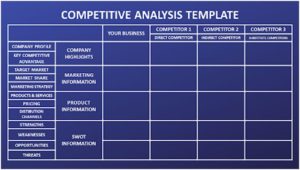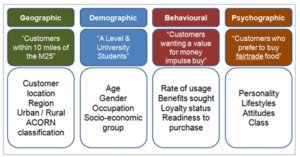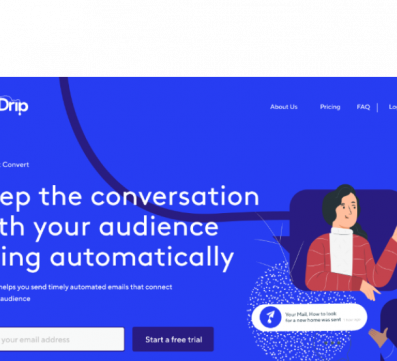Whether you are running a startup, about to launch a startup or want to run a major campaign for your business, you need to understand what you are getting into. This means you need to know everything there is to know about that industry, the people you are selling to and the people you should be looking out for i.e your competitors. Simply put, you should always understand the landscape before going ahead to erect your building.
Creating viable market research for a startup requires in-depth analysis and deduction skills. There are several dynamic approaches to creating truly effective research to build a successful startup. Here, we will be sharing the essential steps you need to undertake to create a worthwhile market strategy through the 3 pronged approaches; Industry analysis, competitor analysis and customer analysis.
Industry analysis

Source: Indiamart.com
First, you need to understand your industry. The questions you should be looking to answer are:
- What kind of industry is this?
- What useful statistics about this industry can I find?
- Are there any relevant government policies that pertain to this industry?
- Who are the biggest players here?
- What trend has this industry followed over the years?
You may think it will be difficult to find answers to these important questions, however, the internet is the major tool you need to get started. You can find your answers through various accessible mediums without resorting to expensive research options.
Google – Google is your best friend in anything research-related. Simply type in your relevant questions and you will surely find useful information to work with.
News media – The media has already carried out a lot of this research for you, you just need to know how to find them. Check popular trade publications that pertain to your industry to get these answers. For example, someone in the software field will find these answers in publications like Techcrunch, For advertising, one can find such answers in trade publications like Adweek. If you are looking to conduct research in the banking and fintech industry, trade publications like The Wall Street Journal, The World Bank and Global Finance Magazine will come in handy.
Internet polls – Set a poll on your social media platform inviting your audience to share their answers regarding some of these questions. You’d be surprised how much you would learn from simply asking those familiar with your field.
Government statistics – Statistics related to various industries are regularly carried out both at the national and international level by government agencies, and other bodies. There are various free sites you can take a deep dive into to find the information you are looking for. You can easily access these statistics on their website or in their periodicals.
Competitor analysis
Your competitors will provide the biggest clues to guide you in your market analysis. Once you have identified the biggest players in your field, you need to conduct a broad analysis of the activities they are carrying out, both online and offline.

Source: BuildmyBrand
These are good mediums to start from:
Social media – Going through their social media handles is a great way to gauge the tone of the brand, the audience they are trying to connect with and the way they approach their content output and design. This gives you an inkling of the kind of approach you should consider for your brand.
PR activities – What kind of advertisement are your competitors running? Who are the influencers they work with? You should find out what their blog says about them and how they approach the design of their website. We’ve already spoken extensively on how a good website design can drive your customer engagement.
Media coverage – Starting with the launching pad that is Google, you can easily search to see the extent of the coverage your competitors are getting, the kind of sites that cover them and how the general public perceives them. This can guide you in selecting media outlets you want to work with on your own campaign.
Customer analysis
Your customers make up the third part of your market research. You can’t just put a product or service without first finalising the problem you are trying to solve and who you are trying to solve those problems for.

Source: Google Images
You should already have a vague idea of the kind of potential target audience you feel will be interested in your services. The next step is to group that audience narrowly so you can run targeted ad campaigns. You should group them by various subsets:
Age – People aged 6 to 25 will most likely not be interested in the same things Gen X (people aged 41 to 56) will be interested in. Hence you need to divide your audience by age group and determine which of the age groups you are actually interested in marketing to.
For instance, Facebook is a platform more suited to marketing to older individuals. On the other hand, millennials in their mid-20s and early 30s tend to gravitate towards sites like Instagram and Twitter.
Socio-economic class – Divide your audience by their income parity. If you have a very niche market wherein your products and services can only be afforded by the wealthiest people in your region, then these are your HNIs i.e High Net worth Individuals ( the billionaires and multi-billionaires). You can also divide your audience by Upper middle class (B1, B2), Lower middle class (C1, C2) etc.
You can use this model to decide the mediums you will use to market to them as wealthier people tend to have different sales models than others.
Gender – This is where you determine if you want to sell to only men, only women or both genders. Certain products and services are gender-specific, so you need to ensure you are not making a campaign that will be too broad and alienate your actual target audience.

Source: Pinterest
Location – Analyse what areas your audience live in based on city, state or country. You can also set it based on a general geographical region.
These are the major steps to incorporate when planning your market research or simply to understand your brand’s exact positioning better. However, you can also expand upon it by also including the social media sites they use, their educational background, interests etc. Remember, the more precise your market is, the more defined your campaign will be.
Following the steps above will help guide how you choose to market your brand, your communication model, as well campaign management and expenditure plan.
At Charisol, we are experts in building optimal websites and products that will connect with your audience and help achieve your business goals.
If you would like to learn more about how we can bring your market research to life with engaging websites and content, click here to see what we can do for you.



